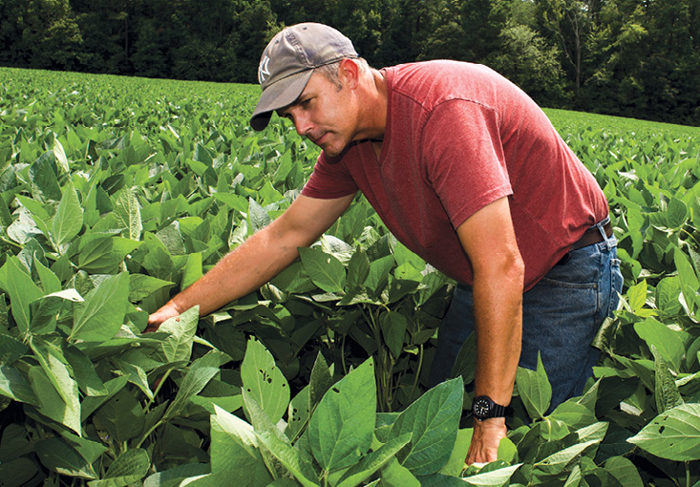No-Till Farmer
Get full access NOW to the most comprehensive, powerful and easy-to-use online resource for no-tillage practices. Just one good idea will pay for your subscription hundreds of times over.

STAYING GREEN. Kilmarnock, Va., no-tiller Robb Hinton looks over a field of soybeans double-cropped into wheat. He also raises corn, full-season soybeans and rye on 1,400 acres, and last year seeded 1,000 acres of cover crops.
IF YOU ASK Robb Hinton about what he’s doing on his farm, his answer is he’ll try just about anything.
But one thing’s for sure — he’s satisfied with the decision he made to convert to no-till and start seeding cover crops on his farm near Kilmarnock, Va.
Back in the 1980s, farming was difficult. His father’s farm wasn’t quite large enough to support two families, so Robb went to work in the construction industry and started his own fabrication business.
Knowing he wanted to return to farming, in 2003 he picked up 300 acres. In 2007, the perfect opportunity came along and he sold business to farm full time.
“I don’t believe we’ve put a plow in the ground since 2003,” he says. “Looking back, I wonder why we ever did.”
On his 1,400-acre farm located on a peninsula 70 miles east of Richmond in the Chesapeake Bay watershed, Hinton typically no-tills corn and soybeans while running a Great Plains Turbo-Chopper on wheat ground. With poor wheat prices, Hinton started experimenting with raising cereal rye, which he uses as a component in his cover crop blends.
He handles soybeans two ways — double cropping them behind wheat around the third week of June, or raising full-season, 4.6-maturity soybeans planted in…